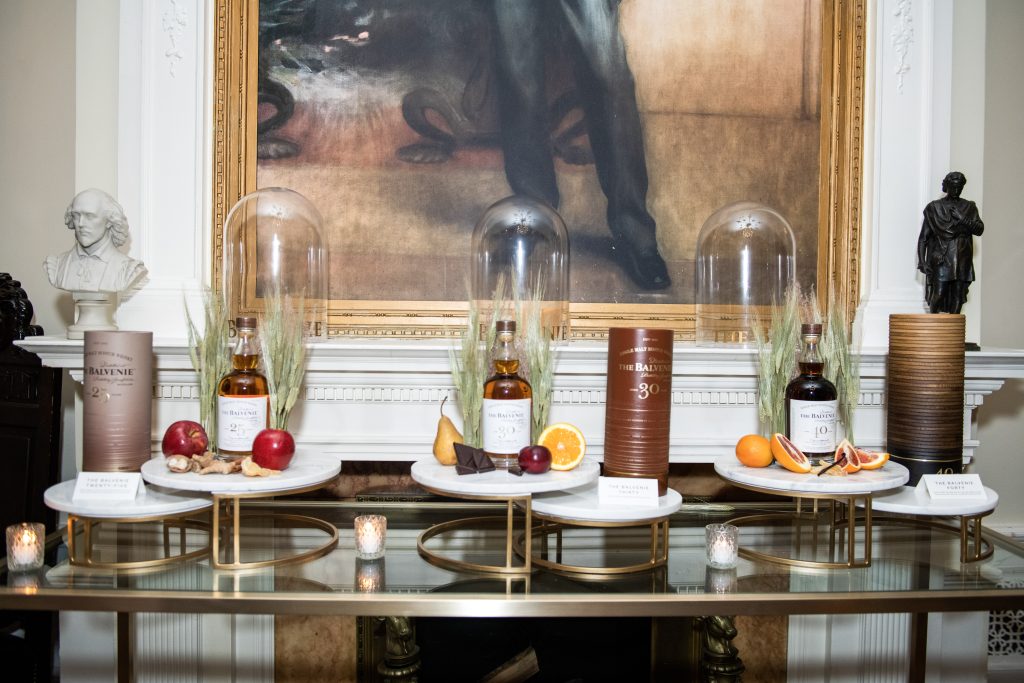September Scotch: The Balvenie Embraces Peat
Experimental expressions and a dynamic core collection from the acclaimed Speyside whisky

One of the most popular and critically acclaimed single malt scotch brands (together no small feat in such a highly competitive category), The Balvenie entices and appeases lovers of Speyside whisky. The winning recipe here is a portfolio of complex spirits, each enveloped in mellow, sweet and delectable sensory package. The experience is as deep as you want it to be, with the single malts easy enough for beginners and considered enough for collectors. As we enter year two of our September Scotch profile series—dedicating quality time to well-produced whiskies—the Balvenie happened to make a rather startling announcement considering its origin region. The brand has released two new peated spirits as part of its core collection, very uncommon for the generally light and sweet whisky-producing Speyside area. There’s The Balvenie Peated Triple Cask (introduced in June, and only available in global travel retail) and The Balvenie Peat Week Aged 14 Years, a 2002 edition. Rather than a percussive palate boom, as one often associates with peat, the Balvenie’s peated tipples gently roll forward, make their way around the mouth and then linger politely at the finish.

These are the first two whiskies on the market that have been made from 100% peated barley at the distillery. And while both have good stories, the Peat Week stands out—on the tongue, for its sweetness and elsewhere for its inspiration story. Once a year since 2002, always during the distillery’s maintenance period, The Balvenie’s distillery manager (at the time) Ian Miller would run peated barley through the distillation process. It could only be done during this one week, at this one time of year, because the peat scent is so strong and pervasive it would impact all other production. This week was quite literally known as Peat Week. 14 years later, that 2002 spirit was bottled and now named after the week during which it’s produced. It was aged solely in American Oak casks and hits the market at a strong 48.3% ABV.

But why even explore peat at a brand known for smooth, sweet spirits? Gemma Paterson, the Balvenie’s Brand Ambassador, explains that it’s about “harking back to the old way whisky was made. Most malts produced in Scotland were heavily peated because peat is—and was—a fuel source. It was not a flavor component. It was used as a fuel first and foremost.” The Balvenie used locally sourced peat through the ’30s, ’40s and ’50s. It’s part of their heritage. Further, it’s the brand embracing—and experimenting with—something decidedly Scottish. Some families still use peat to heat their homes. It’s as seeped in Scottish culture as whisky.

The Balvenie is not unfamiliar with non-traditional, innovative offerings. Their Tun range demonstrates a variation on the marrying process—where multiple select vintage casks (some from the ’60s and ’70s) spend time together in specific tuns (massive holding vessels). Each Tun release is named for the tun that held it, and the specific batch number—with Tun 1401, Batch 3 being a recent taste excursion we ventured on and loved. These whiskies are gems for collectors and demonstrate Malt Master David Stewart MBE’s vision for what scotch can be.

Of course, there’s also an age-statement core range featuring a 12, 14, 17 and 21 year old. The 12 and 17 are close siblings, separated by age and complexity. Both known as a Doublewood, the former spends at least 12 years in traditional whisky casks, American Oak ex-bourbon barrels and hogsheads, before moving to Spanish oak ex-Oloroso sherry casks for an additional nine months. The latter also starts in American oak barrels before being transferred to European oak sherry casks. The Spanish impact is a delightful, sometimes delicate spice but approachability is key here. The 14, however, spends 14 years in traditional oak whisky casks and then gets “finished” in casks that previously held Caribbean rum. Here, the result is a sweetness that has a broader appeal, especially to bourbon drinkers and those timid about scotch.

The Portwood Aged 21 Years acts as a crown jewel in the core collection. A port finish works truly well with the American Oak maturation. With a silky smooth character with touches of berry and honey, this spirit has become one of Stewart’s most awarded creations. Rounding out the portfolio, a Single Barrel Range features a 12, 15, and 25 year old offering—with handwriting on every bottle documenting the specific barrel and batch. Subtle differences define these products.
All things considered, Peat Week and Peated Triple Cask do have their place in a portfolio flush with experimentation. We shall see if they appeal first to The Balvenie drinkers or if they bring lovers of smoke to the brand. While both are making their way out to markets, the Doublewood 12 is celebrating an anniversary. It’s been the flagship product for 25 years now. That’s a testament to consistency and quality, for sure.
Images courtesy of the Balvenie












